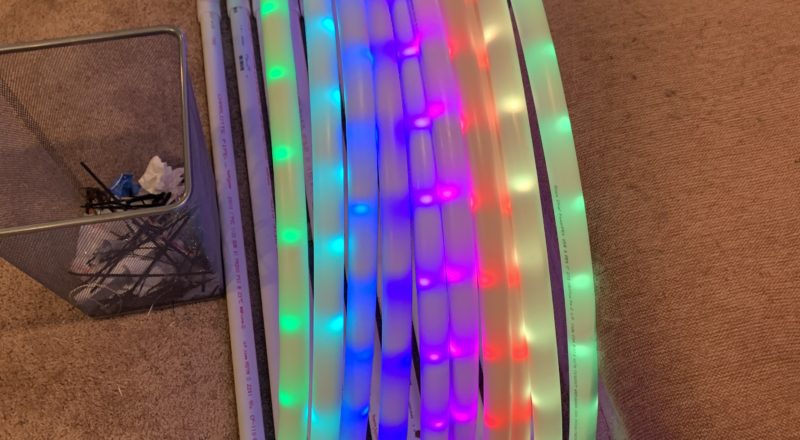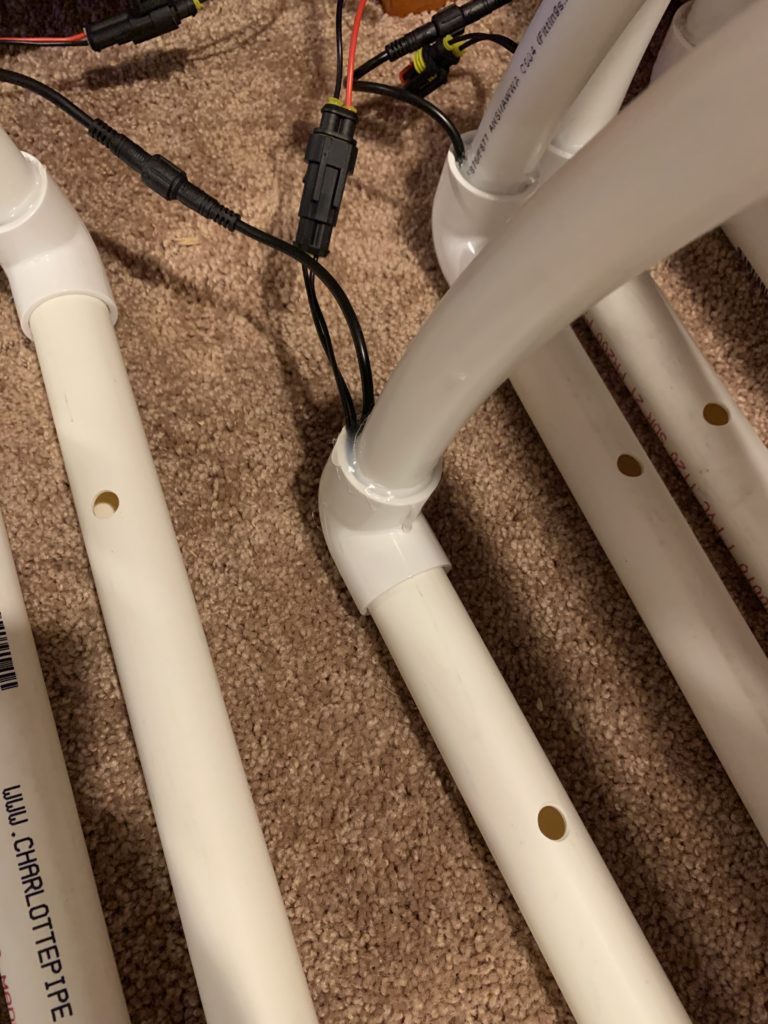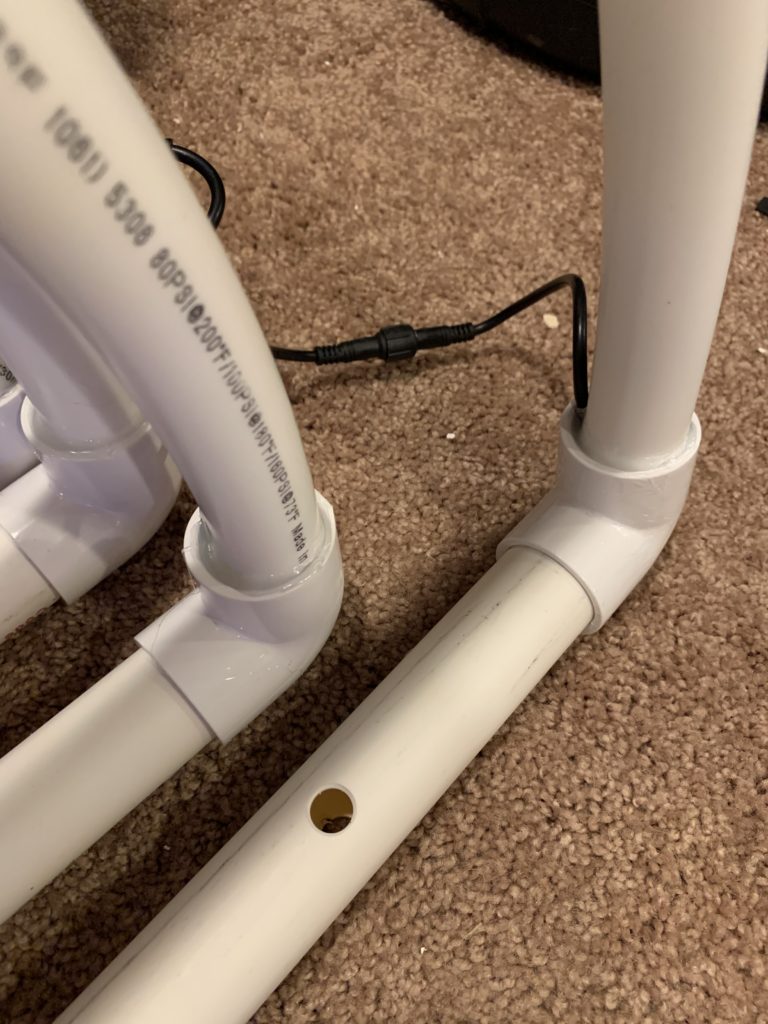
Jumping Arches
Important Notice
This site is no-longer being maintained, and the content and links found here may be irrelevant and outdated. It is online for archival purposes only.
These are a staple in holiday light shows, and I wanted some smaller ones that were versatile, CHEAP, and easy to build. I did a bunch of experimentation (and went through a lot of scrap wood and plumbing supplies, and several 3D printed holder designs) and eventually came up with these…

These are 39″ long, approx. 21.5″ high, and have 20 pixels each. I figure they can be scaled up quite a bit, although they may need more bracing or larger pipe at some point.
They are made out of:
36″ 1″ Thin-Wall PVC (you can use Sched. 40, but it’s a lot more expensive)
60″ 1″ White PEX*
2x 1″ PVC Els (Elbow)
20x WS2811 “Bullet” Pixels
Pigtails/Wiring
Drill/Bits
Hot melt glue/gun.
*PEX-A is a lot more translucent than PEX-B, but is also a lot more expensive. I used PEX-B and just cranked the brightness up.
Assembly is really simple…
Drill two 1/2″ holes through the 1″ PVC pipe 6-8″ in from the ends. These are for stakes. This is optional- I’m sure there are other ways to mounting these.
Hot-melt glue the two elbows onto both ends of the 1″ PVC pipe. I use hot-melt instead of PVC cement so if I REALLY need to I can get them separated again. It also makes it easier to insure the two Els are even on the pipe. They need to point straight up when assembled.
Now- put the pixels in the PEX. I was able to just lay them flat and stuff them in, allowing gravity to help pull them all the way through. For longer/larger arches- you will probably need to use pull twine to pull them through.
Pro-tip: use a shop vac to suck the twine through the tubing!
When done- add whatever pigtails you want to use. This can vary depending on how your show is wired. I added these AFTER pulling the pixes through just so the extra wire wasn’t interfering with me trying to get the pixels through the PEX. I found 20 pixels fits perfectly in the 5′ section of PEX, of course, your mileage may vary. I used X-Connect-style pigtails on either end, along with an automotive power cable for power/power injection on the “In” side. This allows me to mix/match them. I can daisy-chain some or all of them, or split them up any way I want. Right now I have 10 but will likely make more.
I use solder-seal connectors for all of my pixel connections:
https://lunardenlights.com/2020/09/15/solder-seal-connectors/
Many use heat-shrink crimp connectors or even solder and heat-shrink tube them.
So- PEX isn’t actually sized the same way as PVC (or any other pipe for that matter), and fits very loosely into the 1″ elbows. In this case- that is GREAT because we want it to angle towards the center, and we need room for our wires/pigtails. So- I just bend the PEX to stick both ends into the 1″ Els. This can be a bit of a battle if you buy straight “sticks” of PEX, but is pretty easy if you buy a large roll as it is already curved. Put your pigtails off to the side- that way they aren’t being pinched on the inside or outside, which may be under tension.

Edit/Update: I found out later the next year that these are NOT xConnects, at all.

Now- just fill the gaps with hot-melt glue. This will hold everything together and seal out most of the elements. Any water that does get in will just flow out the holes on the bottom pipe.
That’s it. Once I finalized things and really got going- I could make one about every ten minutes. To mount them in your yard- just use galvanized spikes or tent stakes through the holes you drilled in the bottom pipe.
If this method of mounting ultimately doesn’t work (I haven’t exposed these to longer-term weather yet)- my plan is to put a 1″ PVC cross-piece in the middle of the bottom pipe, with some extension “feet” out of it. This will provide a bit more leverage. I only see this as being needed for arches this size in really-high wind.
If scaled-up to larger arches- I can see using pipe mounting hardware on some kind of a wood base, or even using the same system with more holes and thicker PVC, possibly with guy wires for really tall ones.
